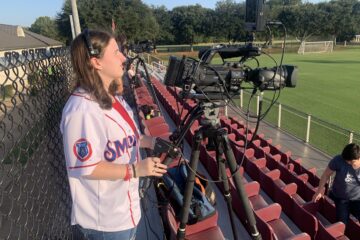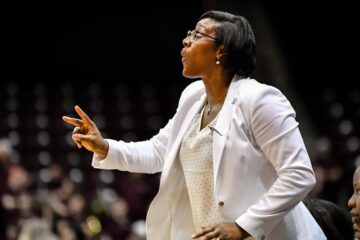With continued concerns about COVID-19, NCAA conferences are divided on how to have a college football season. Of the 10 NCAA Division I FBS conferences, four have declared they will not play football this fall, including the Big Ten Conference and Pacific-12 Conference.
Dr. Andy Doyle, associate professor of history at Winthrop University, said this split was in large part due to regional, political differences.
“There’s kind of a red state, blue state thing going on that’s been going on in football for years,” he said. “Football is more popular in red states.”
Doyle, who teaches a History of American Football course at Winthrop and is featured in ESPN’s series about SEC football entitled “Saturdays in the South,” said he is not surprised some conferences have chosen not to play this fall.
“The PAC-12 in particular, I just think there was no chance they were going to have football because of the social, political, cultural things,” he said. “The pressure to have it wasn’t huge and the pressure against it was pretty significant.”
Doyle said the governors of California and Washington had been particularly outspoken against the idea of having football this fall, which affects schools like Washington, Washington State, UC Berkeley and UCLA.
“If you don’t have those four teams in the PAC-12, then you don’t have a PAC-12,” he said.
Doyle said the Big Ten is more divided. While schools like the University of Nebraska-Lincoln are in extremely red states, other universities in the conference like Pennsylvania State and Michigan State are in states led by Democratic governors.
“Getting every Big Ten school was going to be an impossibility, so there’s a whole lot of Ohio State [and] Michigan fans who are seriously [upset],” he said.
Doyle said he believes it may be safer for football to be played this fall than for it not to be.
“I think, honestly, the players might be safer in a very disciplined and regimented environment where they’re getting tested regularly and they’ve got coaches all over their [butt] every single day,” Doyle said. He also said he thinks teammates will help hold each other accountable.
“They don’t want to be the one that brings the virus back,” he said. “They don’t want to be the idiots on the Miami Marlins who went to a strip joint and infected half their team.”
One school that began receiving a lot of attention during the scheduling process was Notre Dame. The Fighting Irish, who operate as an independent football team with no full-time conference affiliation, will join the ACC temporarily for the 2020 season.
While some fans have speculated that this could be a permanent switch for Notre Dame, Doyle said it will not happen.
“Notre Dame loves [its] independent status,” he said. “Notre Dame doesn’t have to split its television revenue with other conference members, so they make more money than any other college football team off of television. They like that and they’re going to keep that.”
As for football in the spring, Doyle said he doesn’t believe there will be much of a season because players will need to focus on preparing for the NFL Combine. Furthermore, players who get drafted by an NFL team will be expected to play a 17-game regular season in the fall.
That would have players playing over twice as many games as they are used to in a calendar year, which could be physically and mentally exhausting and could put them at a greater risk for injury.
Doyle said smaller schools that don’t have many NFL prospects, like Wofford or Furman, could put together a season in the spring that is not too different from their normal seasons in the fall. However, he said most teams in the Big Ten and PAC-12 would have a “low budget version” of a football season.
Finances are also a big factor for conferences to consider. Doyle said teams must examine their fixed costs (which include things that have to be paid, like coaches’ salaries) and their variable costs (which includes the actual cost of playing a season) to determine if there would be a greater loss or reward for playing in the spring. Plus, without fans in attendance, schools will be mostly relying on television revenue.
While they don’t make as much as Notre Dame, Doyle said the Big Ten and PAC-12 would be okay since almost 50% of their revenue comes from television anyway. For smaller schools that are usually more dependent on gameday revenues at the stadium, he said it would be a matter of how many television viewers they can draw in the spring.
“What they’re banking on is the public appetite for football,” he said. “There’s no more college football on, [so] now a game between Western Michigan and Bowling Green might actually get some ratings – or at least enough to put a few coins in the coffer.”
While the public appetite to attend a football game may also be pretty big, Doyle said it’s important to remember that schools can’t make the decision to allow fans alone.
“It’s gotta be approved by state governments, and if you’ve got a hard-core lockdown governor, that ain’t gonna happen.”



